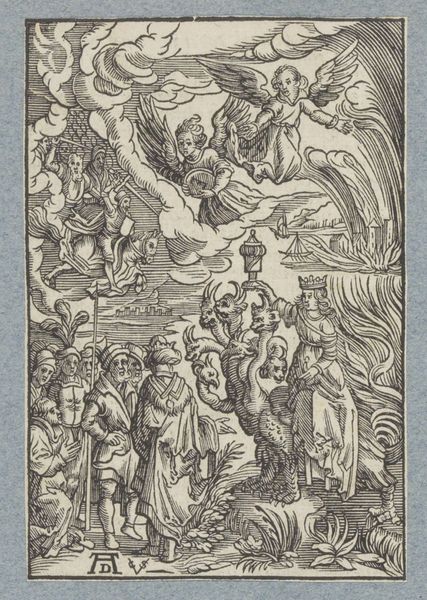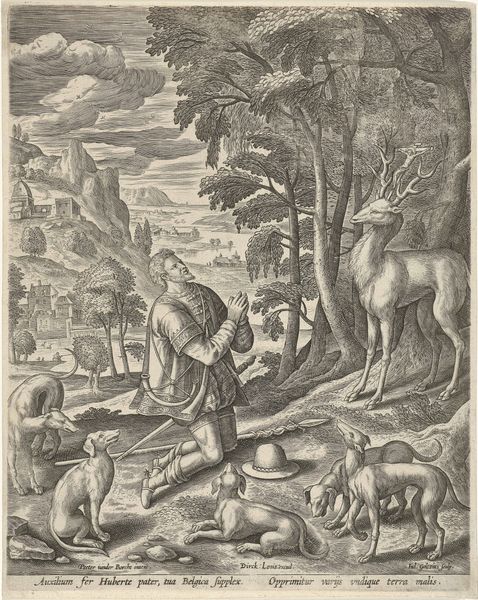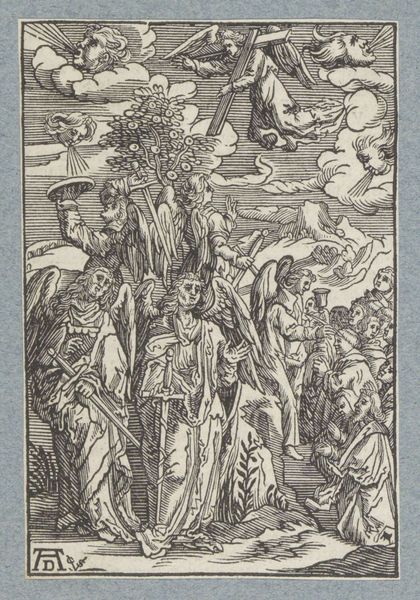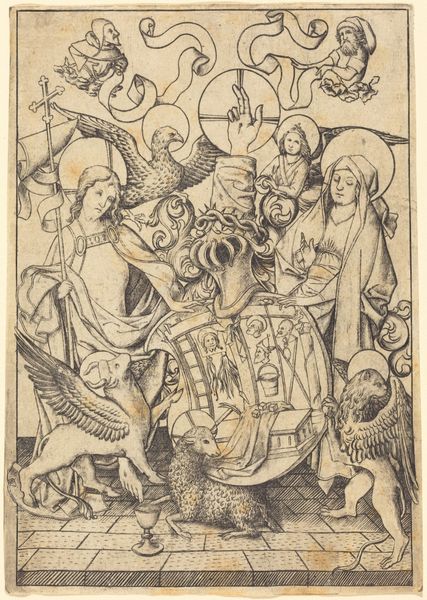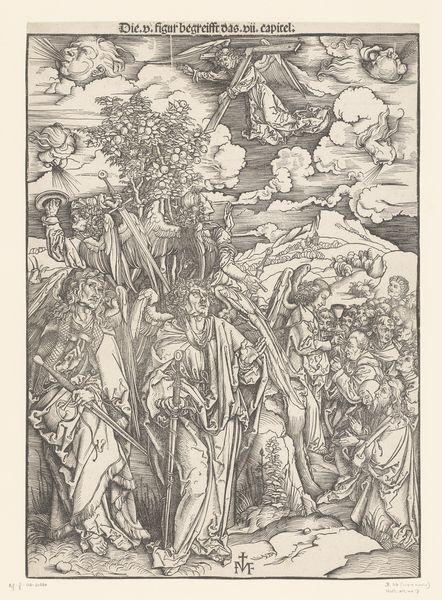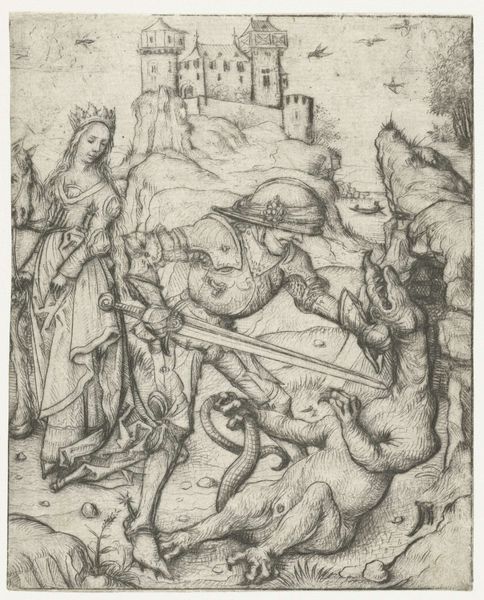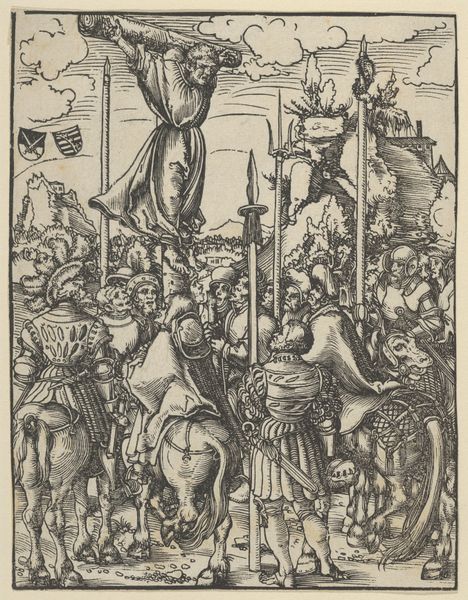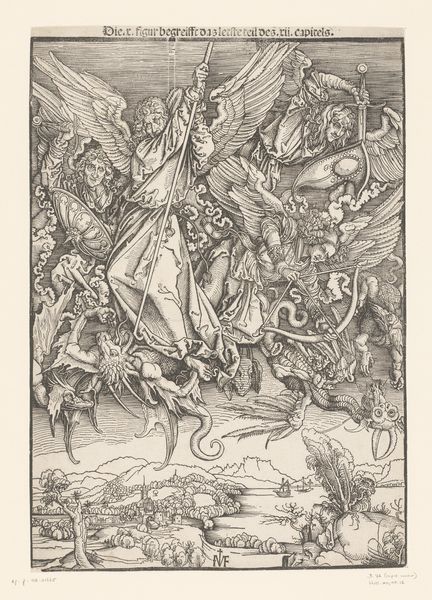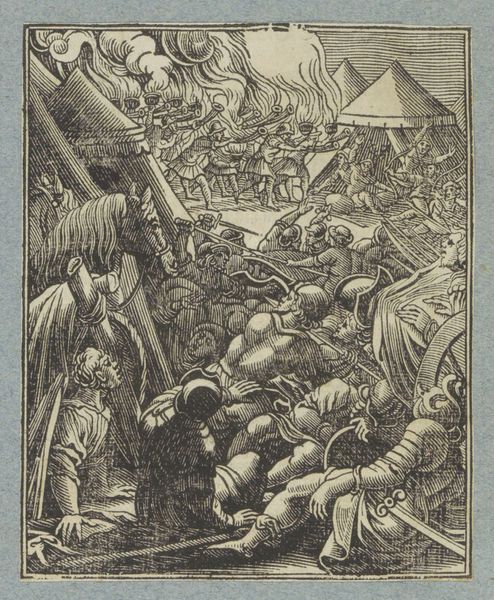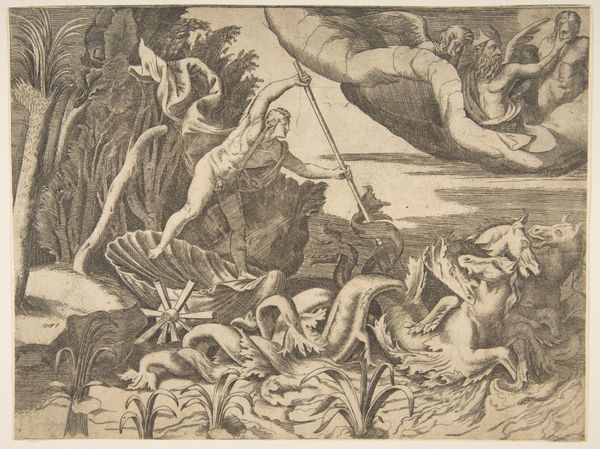
Copyright: Public domain
Curator: This is Ivan Bilibin’s "Illustration for the epic “Dobrynya Nikitich and Zmey Gorynych," created in 1941. It depicts a scene from a Russian Bylina. Editor: The first thing I notice is the dense patterning and striking use of color. The green scales of the defeated dragon against the reddish-brown earth creates an appealing contrast. Curator: Bilibin was deeply influenced by Russian folklore, as were many artists associated with the Russian Avant-Garde. His illustrations, often for fairy tales and epics like this one, sought to revive and reimagine Russia's cultural heritage. We see him creating artwork within a society undergoing massive ideological shifts. Editor: The composition leads your eye from the gruesome dragon heads in the foreground to the figures further back. There's the strong heroic figure, juxtaposed with the rescued princess and retinue in the distance. Look at the detailing—every element has distinct textural variation. Curator: The epic itself is fascinating. Dobrynya's story is rooted in pre-Christian Slavic mythology, intertwined with themes of bravery, honor, and the struggle against destructive forces, personified by the dragon, of course. Remember that in 1941, with Nazi Germany advancing, heroic narratives had an important place in Soviet cultural life. Editor: You see it through both the intricate, almost Byzantine detail, and through Bilibin's skillful manipulation of depth. Each character seems carefully positioned to reflect the moral structure of the underlying story. Notice, for instance, the downward cast heads on the dragon's corpse. Curator: Bilibin managed to create art with wide popular appeal, despite its complex relationship to politics. It also had enormous value in celebrating Slavic folk-culture and heritage at the time. Editor: Exactly. Even without knowing the story, the artwork is captivating through the visual strategies employed to construct such a narrative—the use of light, line, and form draw the viewer into the depths of this fantasy world. Curator: Reflecting on Bilibin's image, I am reminded of the continuous appeal and adaptation of myth, even in periods of great upheaval. Editor: And for me, the joy is in examining how form conveys narrative depth—a truly effective synthesis.
Comments
No comments
Be the first to comment and join the conversation on the ultimate creative platform.

